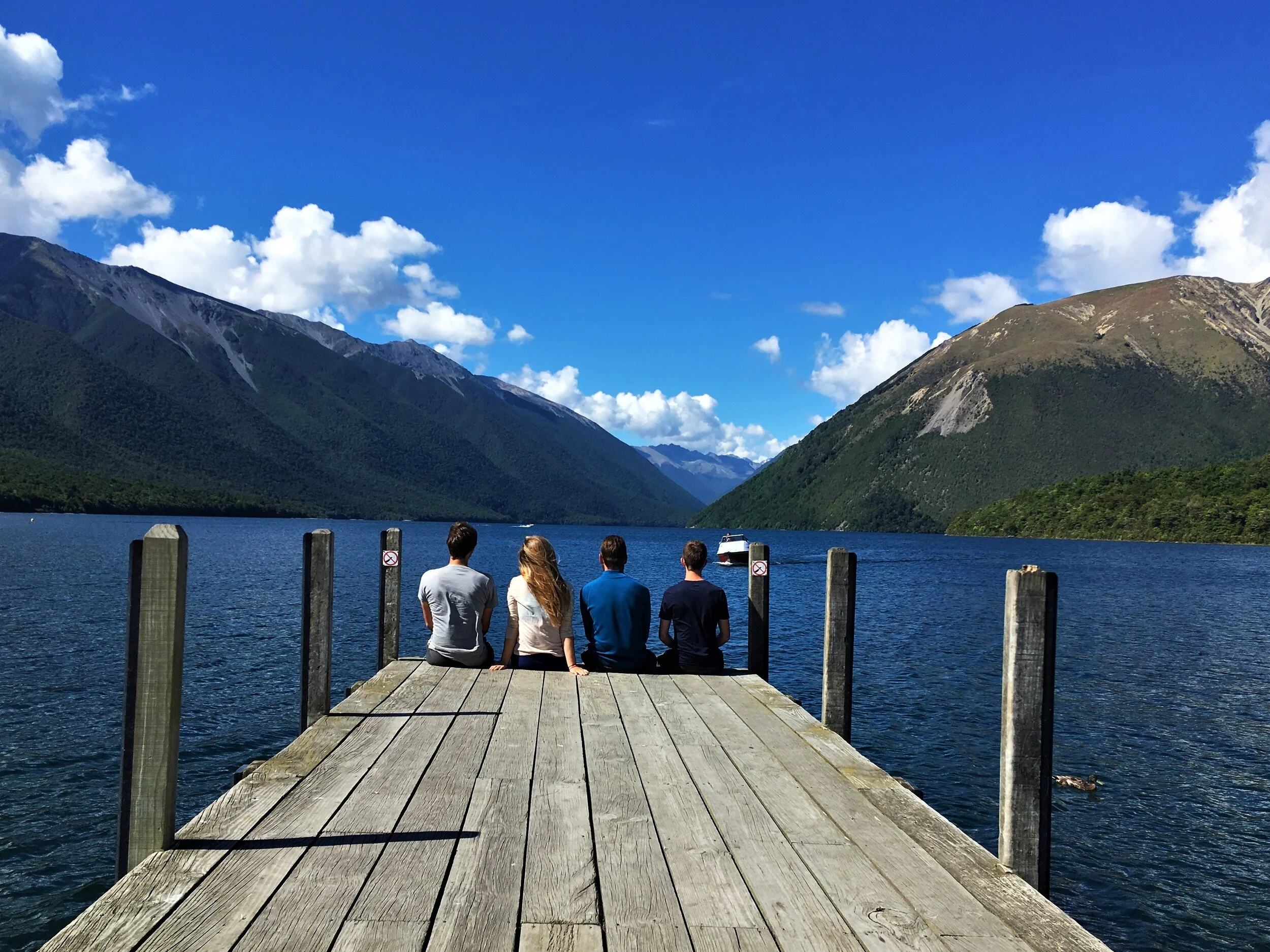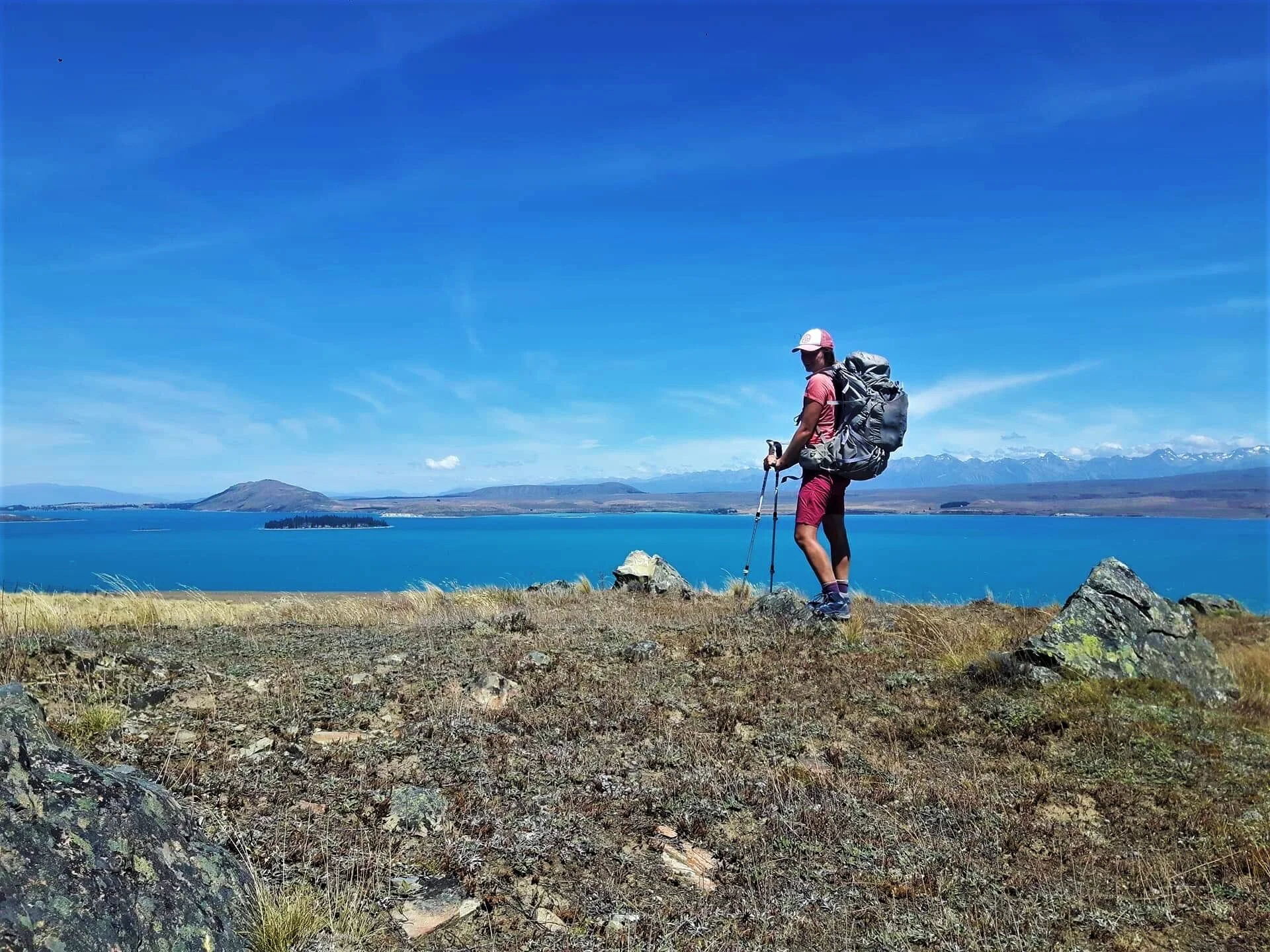Deciding on which thru-hike to do is absolutely thrilling. It’s almost like searching for a new pet, or even online dating. “Hike-shopping” is essentially deciding on which adventure to embark on, knowing that the trail you choose can change your life in all sorts of wonderful ways. Many seasoned hikers have a list of hikes they’ve always to do, but the choice can feel daunting for those less experienced. Browse the web or get lost in the endless array of drool-inducing guidebooks of our planet’s great treks. This is my list of top things to consider when deciding on a thru-hike!
Distance
Motatapu track, ca 1000 km in on the Te Araroa
Silver Pass on the John Muir Trail
Perhaps the most obvious consideration. Be honest with yourself when considering how long you want to hike for. I hate to shatter the illusion that every day on a trail is beautiful and splendid, there will be plenty of days that you would kill to get away from all that… nature. Importantly, do not make your first thru-hike an ultralong one. You might not even like hiking once you get into it or find that you injure easily. Start easy and build your way up. Also, not everyone has time to take 5-6 months off work to complete massive treks like the Triple Crown Trails of the USA or the entire Te Araroa. Hikers who complete these trails are typically in some “in-between stage” of their lives, such as between studies, jobs or retirement. Don’t get caught up in the idea that you gotta thru-hike a long-distance trail. Breaking it up in sections can be a great option!
Are longer trails harder? Yes and no. Yes, because hiking for months instead of weeks is extremely taxing on your body. Not everyone can handle the mental game of getting up and walking x miles all day every day. Again, build up your repertoire gradually. I know myself well enough to concede that the Te Araroa is the longest trail I will ever do. 1400 km in one go was enough for me (and my hips). I doubt I could have made that distance without the deep personal motivation that drove me onwards. Interestingly, the hardest trek I’ve ever done was also one of my shortest. The GR20 in Corsica is 190 km long, but absolutely merciless. So bear in mind that difficulty is not only dependent on distance, but terrain too.
Terrain & Climate
My 100 km thru-ski of Hardangervidda in 2017
Day 5 on the GR20, the toughest trail in Europe
What kind of terrain do you enjoy the most? I’m a mountain girl. True, I’ve had some magical moments in New Zealand’s beech forests, but overall my heart belongs above treeline. When I pick my trails, I think a lot about what kind of everyday I would like to have. How much variation in terrain will there be? On ultralong trails such as the Pacific Crest Trail, both the climate and terrain change significantly – how will you cope? Perhaps only the Washington section would be good, and ditch the desert? Don’t pick thru-hikes that don’t sound appealing to you just so you can brag about completing them, treks should be experiences to savour, not to endure! Perhaps you are a more culture-oriented hiker who enjoys low-lying, populated areas over extreme wilderness? Own it!
What kind of climate do you prefer?
In 2019, I rebooked my tickets from Austria to Corsica two days before I was due to start hiking. Why? Crap weather forecast. I hate hiking in the rain. Good weather is perhaps my biggest motivation booster, so I purposefully choose hikes in places known for predictable fine weather. Whether you are skiing or hiking, be prepared for the right conditions. Also, take potential climatic risks into account. Do you have the right gear for the Southern California desert? The rainy Scottish highlands? My 2017 thru-hike of the John Muir Trail in California’s High Sierra mountain range posed unique challenges after a record snow season. Dangerous river crossings from snow melt had claimed several lives that year. As a Norwegian I’m used to snow, but many Americans we met were really freaked out by it. Plan ahead so you don’t find yourself faced with an ice slope without crampons or an ice-axe.
Country - Language & Culture
Besseggen, Norway. Locally sourced hiking!
Tekapo, New Zealand. The other side of the world, but still home.
Which country my thru-hike is in is admittedly not my top concern, but there are some important points to consider here. Hiking in a country where you speak the language is a huge advantage, especially if something goes wrong and you need help. Needless to say, avoid countries/regions where your personal safety might be at risk. Trekking in your home country can be ideal for several reasons: resupplying is easier, you can quit without too much hassle if needed, and you save money on travel expenses.
The local culture will add plenty of flavour to your hike. If you hike to experience something completely different like learning a new language or engaging with the local population, you go for it! Trekking is an awesome way to experience a country off the touristy scene. Some countries have a very established outdoor culture and even lingo, notably the US, European countries in the Alps region and New Zealand. Some countries (NZ, Norway, Sweden, Austria) have Alpine clubs/associations that provide accommodation for trekkers on popular routes, which can be a major bonus.
Level of solitude vs. community
All alone on the GR20
Having company saved my life when Bush Creek flooded (TA)
Are you hiking solo or with a group? Going solo offers ultimate flexibility, you can go at your own pace and don’t have to consider anyone else’s needs. Downside: you might get lonely, or run into dangerous situations requiring outside help. Hiking with other people can be fun and is generally safer. However, you sacrifice freedom to “hike your own hike” and you might not be as fond of your trekking mates after a few hundred miles. A good compromise can be starting off solo and then finding a group/partner of your liking along the way.
Personally, I like to hike what I call “trails with names”. Established routes that have a designated starting and end point, where I know I will meet other hikers to share the experience with. I can enjoy hiking solo during the day, but I love having company in camp. Starting off by myself enables me to choose my company along the way, and if relations turn sour, I can always go off on my own again. I’ve met some wonderful people on my hikes, many of whom I still keep in touch with. Having Toby on the Te Araroa proved invaluable safety-wise, but sharing that champagne at Bluff was perhaps the greatest gift of all.
Consider the level of traffic you’ll want on your trail. You’ll find a great community of hikers on highly populated trails such as the Appalachian Trail (USA) or the Camino de Santiago in Spain. Routes for the more solitary hiker could be the Pacific Northwest Trail (USA) or Australia’s Bibbulmun Track. Everyone’s preferences are different, you do you!
Budget:
Norway has great huts, but our price level is very high
California: cheap food vs. plane tickets…
Hiking is cheap. It’s just walking, right? Wrong. Sure, it’s cheaper than being on a beach resort holiday for the equivalent time. You sleep outside and wear the same clothes every day. However, you’ll also be consuming ridiculous amounts of (often expensive) backpacking food, unexpected costs like transport and replacement gear may arise, and you’ll most likely not have any income while you’re hiking.
My rule of thumb is that if you can’t afford to treat yourself to an occasional burger & bed on a town day, you can’t afford to thru-hike. Don’t torture yourself on a super tight budget. There are many ways to save up for a big trek, including side jobs, selling possessions you don’t need and living a more minimalist lifestyle in general to save larger chunks of your pre-hike income. I lived at home during my studies and during my two gap years between my undergrad and MA. It didn’t earn me many cool points with dates, but it enabled me to afford all my trekking adventures and my crazy expensive postgrad degree in London.
Consider budget when picking your distance range and country. Plane tickets can be cheap, and price levels on the Annapurna Trek in Nepal will be much lower than on notoriously expensive thru-hikes like the Te Araroa in New Zealand. Costs vary a lot for individual hikers, my best tip is to ask in online forums to get a general idea of what people spent.
Finally, there will always be hikes that capture your heart in special ways. But they are all unique in their beauty and what you will take away from them. Relish the delight of choosing and happy trails once you’re there!











